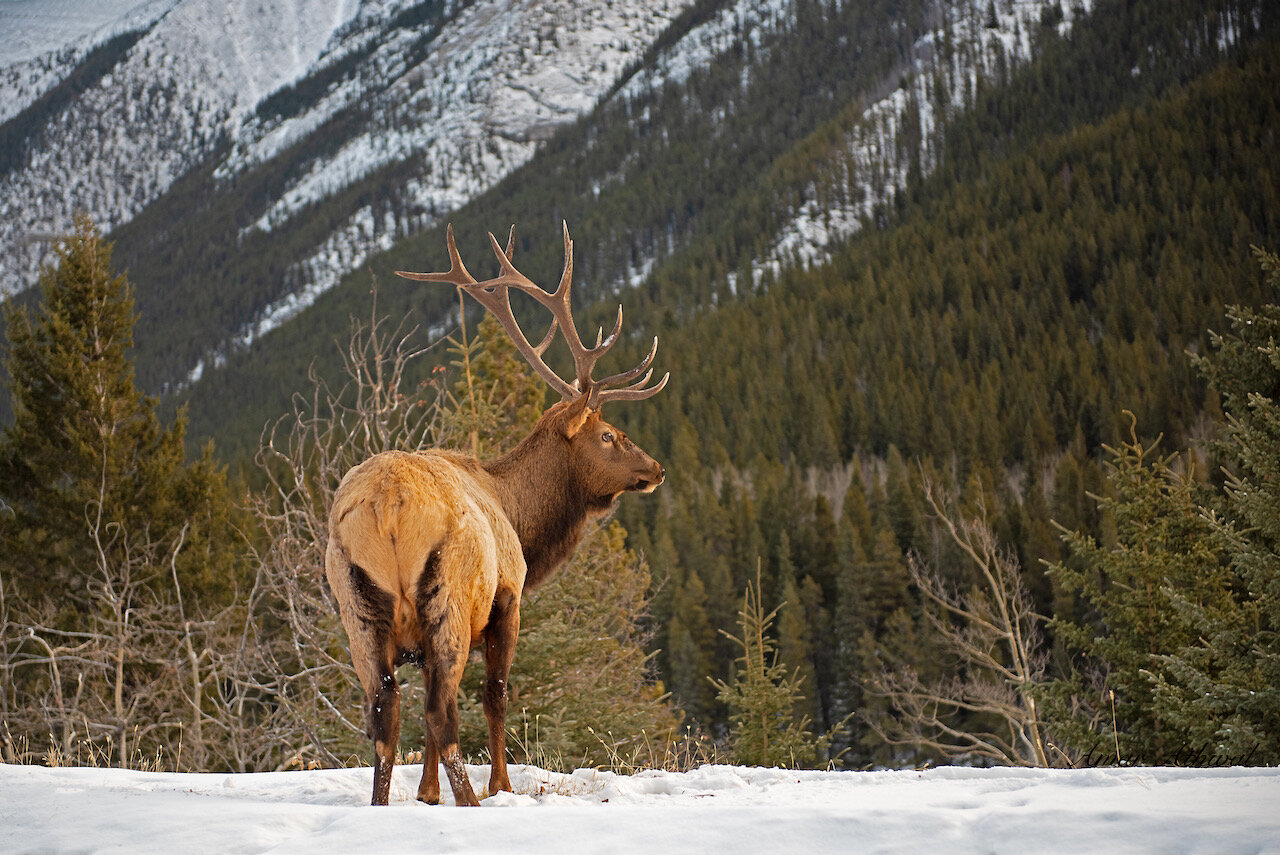This bull and other male elk will start losing their antlers soon. This process happens each year at different times with the members of the deer family and with the caribou females. It’s a rare regeneration process among the mammals, which scientists are studying and hope to be able to duplicate in humans. Not to have antlers growing out of our heads, but to help nerves regenerate to return mobility to those with damaged limbs. The antlers are used to defend against competitors and to attract females and they are shed sometime after the mating season.
Replacement with new antlers start right away, with some moose they can be as heavy as 34 Kilograms. Growing antlers are surrounded by a fur called velvet, which carries all the material to build the bone. When the antlers are growing underneath the velvet, they are soft and can easily break. The animals will try not to damage them, the nerves in the velvet will provide the sensation to make sure the growing antlers are not banged or scratched until they stop growing and are hardened. Basically, with the nerves the animals will feel pain if the antlers feel pressure. In about three months the bone stops growing and they become sturdy. Blood flow stops and the velvet starts to break up. The males start feeling itchy, which gets them to start rubbing the antlers on branches, resulting in the velvet peeling off. Now they are ready to battle.
For the scientist the interesting part is the nerve that can grow to three feet long, these wiring is called axons, where information is transmitted. With antlers, the axons regrow each year, but not with humans when a limb has been damaged. By studying the members of the deer family, the scientists hope to understand the process and the material needed to duplicate it in humans who have damaged limbs or spinal cord injuries.
